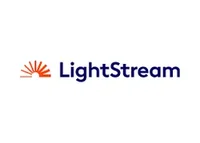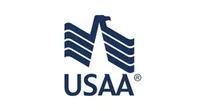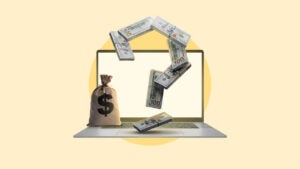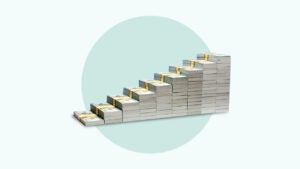How to get a $100,000 personal loan

Key takeaways
- Very few lenders offer $100,000 personal loans, and those that do have strict eligibility requirements.
- Carefully consider the costs and alternatives to $100,000 personal loans before you apply.
- Tapping into your home’s equity may be another way to borrow a large amount, but you risk losing your home.
To get a $100,000 personal loan at the best rates and terms, you’ll need excellent credit, a high income and the right lender. Not all personal loan companies offer six-figure loan amounts. Those that do typically only lend large amounts to borrowers with stellar financial profiles.
A $100,000 personal loan can be a good alternative to a home equity loan. Unlike a home equity loan, it doesn’t add a lien to your home. However, shorter repayment terms and higher rates may strain your budget if you don’t weigh all the advantages and drawbacks of taking out a large personal loan.
Lenders that offer $100,000 personal loans
Only a handful of lenders offer $100,000 loans. The annual percentage rate (APR) and approval requirements vary significantly between lenders, and while you may be able to find this amount with a bank or credit union, you may need to turn to an online lender for funding.
|
Lender |
APR range |
Loan amount range |
Loan terms |
Minimum credit score |
|
6.99%-25.29%* (with AutoPay) |
$5,000–$100,000 |
24–84 months |
695 | |
|
8.99%-29.49% (with autopay) |
$5,000–$100,000 |
24–84 months |
No requirement |
|
| Starting at 8.99% |
$1,000–$100,000 |
12–60 months |
Not Specified | |
|
6.99%-24.49% |
$3,000–$100,000 |
12–84 months |
Not Specified | |
| 9.99%-18.51% | $1,000–$100,000 | 12–84 months | Not Specified |

LightStream
Bankrate's view
LightStream offers some of the lowest personal loan rates on the market. The 6.94 percent start rate competes with current home equity loan rates — if you qualify for it. You can choose up to seven years to repay the loan and may get a rate discount if you set your payment up on autopay. LightStream doesn’t charge fees and if you’re qualified, you may receive your funds the same day you apply.

Pros
- Low interest rates
- No fees
- Rate Beat program

Cons
- Must have an established credit history
- No option to prequalify
- High minimum credit score required

SoFi
Bankrate's view
With SoFi, you can add a co-borrower when you apply. Combining your income with that of a co-borrower can lower your debt-to-income ratio and make it easier to qualify for a $100,000 loan. This feature makes SoFi a solid choice to get a six-digit loan amount.

Pros
- Joint borrowers accepted
- Autopay discount
- Optional origination fee

Cons
- High maximum APR
- No cosigner option
- Limited customer support hours

Alliant
Bankrate's view
If you can’t qualify for a $100,000 loan with LightStream or SoFi, you may want to check out Alliant credit union. You’ll need to become a member to apply, but Alliant is one of the few lenders that offers a 12-month repayment term option — if you are able to afford the monthly payment.

Pros
- Autopay discount available
- No origination fees
- 24/7 customer service

Cons
- Must be an Alliant member
- No listed eligibility criteria
- Co-borrowers not accepted

Wells Fargo
Bankrate's view
Wells Fargo also offers personal loans up to $100,000 with competitive rates and flexible terms between 12 and 84 months — a wider range than most lenders offer. As with other lenders on this list, Wells Fargo does not charge origination fees. That’s a big perk, because with a loan this size, an origination fee can seriously cut into the amount you receive.

Pros
- Wide range of loan terms
- Competitive rates
- No origination fees

Cons
- Must be a Wells Fargo customer
- Unclear qualification requirements
- Limited availability

USAA
Bankrate's view
USAA is known for providing financial products to military families. It provides a $100,000 personal loan product with the same wide range of terms as Wells Fargo. However, its minimum APR is higher than other lenders on this list. That could lead to a larger payment than you’d get with other lenders.

Pros
- Flexible term options
- Personal loan refinance program
- Highly-rated mobile app

Cons
- Limited membership options
- High starting APR
- No prequalification
How to get a $100,000 personal loan
Because personal loans are typically unsecured loans, lenders scrutinize your financial health more closely. That means you’ll need a better credit score, higher and more stable income and less total debt than you’d need if you borrowed less than $100,000.
- Credit score: In general, you will need to have good to excellent credit, a FICO score of 680 or higher, to qualify. An excellent credit score paired with a high income will likely give you the fastest path to approval.
- Income: Lenders may set specific income requirements for you to qualify. You’ll need to document a regular stable income, preferably from a salary or full-time hourly employment.
- Debt-to-income ratio: Your debt-to-income ratio (DTI) is generally one of the more important aspects lenders consider. Most lenders prefer a DTI under 36 percent.
- Proof of identity: You’ll need to provide identifying documents, such as a driver’s license, state-issued or military ID, passport, birth certificate or Social Security card.
- Proof of address: You can document this with a utility bill, insurance statement, mortgage statement, lease agreement, bank statement or voter registration card.
How to calculate the cost of a $100,000 loan
When you borrow $100,000, it makes sense to focus on how the monthly payment fits your budget. However, if you have the resources to repay the loan sooner, you can save thousands of dollars in interest. Although the lenders on the list above don’t require origination fees, check the fine print on your offer to make sure.
Use a personal loan calculator to estimate your borrowing costs. Experiment with different terms to see how the payment and total interest figures change. This is how much you’d p4ay monthly and overall on a $100,000 loan, assuming you qualify for the average personal loan interest rate of 12.31 percent.
|
Loan term |
Monthly payment at 12.31% |
Total interest paid |
|
36 months |
$3,336.26 |
$20,105.24 |
|
60 months |
$2,240.14 |
$34,408.51 |
|
84 months |
$1,781.89 |
$49,679.13 |
Lenders know they can make significant money on a $100,000 loan, so they may be willing to compete for your business. Prequalify with several lenders to see which has the lowest APR, including banks, credit unions and online lenders.
Ask your local bank about any incentives they offer if you already have checking or savings accounts. Also, ask online lenders about any price match guarantees they might offer. For example, LightStream’s Rate Beat program will reduce your rate by 0.10 percentage points if you prove a competitor approved them for a better rate before your loan funds.
Once you finalize your paperwork, your loan funds are usually directly deposited into your account. Personal loans typically fund faster than secured large loan products. Many personal loan companies offer same-day or next-day funding. However, before you receive your money, you’ll typically need authorization from your lender to deposit funds and withdraw your payments.
Alternatives to $100,000 personal loans
Personal loans are the best high-dollar unsecured lending option. However, if you own a home and have built enough equity, you may be able to borrow $100,000 at a lower rate. On the downside, if you default, you could lose your home.
Home equity loans
A home equity loan works like a personal loan in many ways. All your funds are sent to you at once, and your rate and payments are fixed for the life of the loan. Home equity loans are a better fit if you want to spread your payment out for terms as long as 30 years. A bonus: You’re eligible for a tax break if you use the funds for home improvements. However, home equity loan closing costs usually run about 2 to 5 percent of your loan amount, reducing how much cash you take home.
Just be prepared for much more qualifying paperwork and an appraisal on your home. You’ll need substantial equity to borrow $100,000. Lenders typically won’t let you borrow more than 85 percent of your home’s value. You’ll also need a credit score over 700 to get the best home equity loan rates.
Home equity lines of credit
A home equity line of credit works like a credit card secured by your home. During the draw period, you can typically use and re-use the funds as often as you wish. Payments are based on how much you use, though you may be able to make interest-only payments during the draw period. That could make payments much cheaper than what you’d have on a personal loan. Like a home equity loan, the interest is tax-deductible if you use the funds to renovate your home.
Although closing costs are often cheaper, HELOC lenders often charge ongoing fees and even close-out fees if you decide you don’t want or need the account anymore. Another drawback: Rates are variable, which means your rate could spike if the Federal Reserve hikes rates.
Cash-out refinancing
If your credit scores are too low for personal loans or home equity financing, you may want to consider a cash-out refinance. With this type of mortgage, you’ll replace your current mortgage with one that’s $100,000 larger than you owe. You’ll need significant equity since most cash-out refinance programs limit you to borrowing 80 percent of your home’s value.
You’ll also pay closing costs of between 2 and 5 percent of your loan amount, which could be a hefty bill since you’re borrowing more than you owe. The approval process is much more intensive, with a much deeper dive into how much your home is worth. Completing a cash-out refinance can take up to 45 days or longer.
Bottom line
Because a $100,000 personal loan is a significant risk for a lender, they are especially cautious when approving applications. You generally need excellent credit and a high income to support your application.
Before you apply, compare personal loan rates and consider alternatives, such as a home equity loan, home equity line of credit or cash-out refinance. Be careful to weigh your options so you can find the right solution to secure your financial health in the future.
You may also like

How to prequalify for a personal loan, and why it matters


How to get a $10,000 personal loan

How to get a $50,000 personal loan: Check out these lenders



